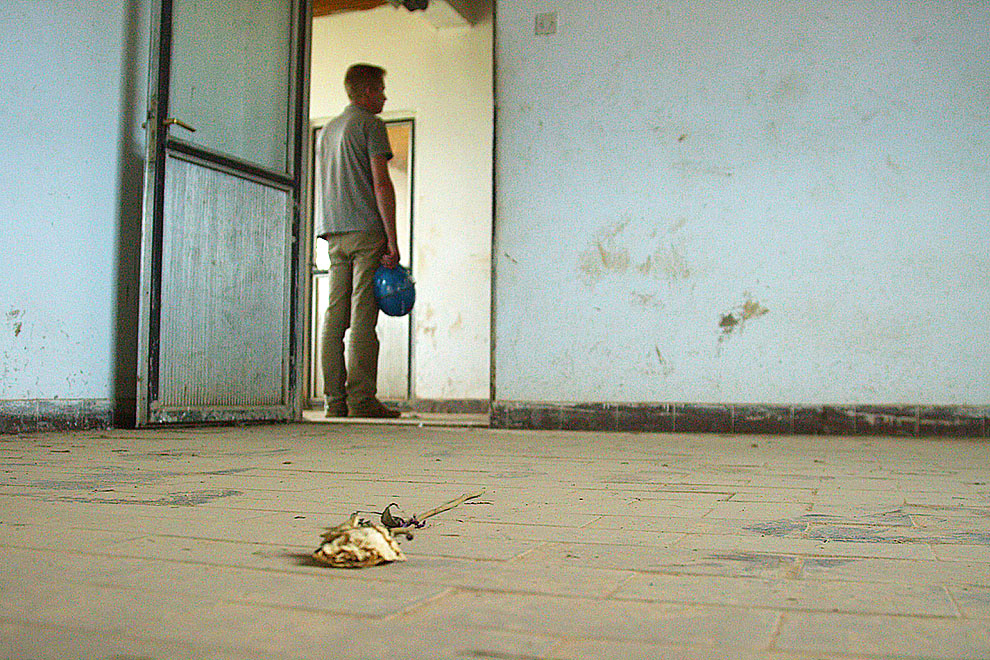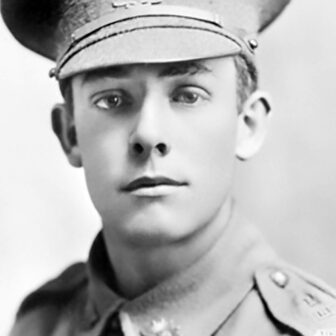From the outside, present-day Bosnia can appear as complex and mysterious as it did in 1992. The myth of eternal ethnic divisions in this far corner of Europe is present as much today – in the country’s lack of economic and political progress, and the absence of genuine steps towards reconciliation and unification – as it was during the brutal war that killed more than 100,000 people and displaced a further two million.
From that perspective, the war was inevitable and unpreventable – a logical consequence of centuries-long ethnic tensions and divisions in the region – and the social, economic and political paralysis of Bosnia since the Dayton Peace Accords in 1995 seems yet another expression of backwardness.
It’s true that the vast majority of the Bosnian population feels paralysed. The official unemployment rate in February 2015 was almost 44 per cent, and many who are employed have no job security in an unstable economy with widespread corruption. Most young people dream of leaving the country. This leaves Bosnians of all ethnic backgrounds unable to imagine a brighter future.
But they are also being denied the opportunity to imagine, or reimagine, a brighter past. Having constructed and fuelled ethnic hatred in the 1980s and early 1990s in order to trigger the war, the nationalist political elites in Bosnia – Serb, Croat and Bosniak alike – have continued to use ethnicity as a tool for consolidating their power.
Imposing an embargo on memories of prewar Bosnia has become an important component of this. As the writer Dubravka Ugrešić puts it, political elites have “confiscated” the memories of prewar Bosnia to prevent the reimagination of a unified, multiethnic Bosnian state. They have carefully patrolled their respective histories of “what happened” during the war, and so school curriculums, public broadcasting, public events and memorial sites on all three sides mostly narrate unambiguous stories of victim and perpetrator.
Bosnians whose loved ones were expelled or murdered by neighbours during the war know better than anyone just how complex this narrative is. Their stories and the questions they raise provide possibly the only solid foundation for creating a functioning Bosnian state.
One such group are the “minority returnees” in the northwestern town of Prijedor, which lies in the valley of the legendary Mount Kozara. Mount Kozara occupied a sacred place in the mythology of the former Yugoslavia: Tito’s Partisans suffered great losses there in July 1942 at the hands of the German Wehrmacht, the Croatian Ustashe and the Serb Chetniks. The courage, sacrifice and martyrdom of the Partisan fighters and civilians, celebrated nearby in the famous Mrakovica memorial complex, came to symbolise the birth of the “brotherhood and unity” (bratstvo i jedinstvo) of the newly formed socialist Yugoslavia.
Prijedor became a symbol of the new Yugoslavia. It was a region with strong economic development, largely due to the discovery of substantial iron ore deposits, which supported its demographically diverse population. Of its 113,000 inhabitants, 44 per cent were Bosniak, 42 per cent Serb, 6 per cent Croat and 8 per cent other.
None of its non-Serb population could have imagined that the town would mutate in 1992 from a symbol of Yugoslav coexistence into the archetype of suffering and violence. A systematic policy of ethnic cleansing resulted in the killing of 3173 non-Serbs (mostly Bosniaks) at the hands of local Serb authorities, with a third executed in the three infamous concentration camps, Omarska, Karaterm and Trnopolje.
The Dayton Accords divided the country along ethnic lines into the Republika Srpska and the newly formed Bosniak-Croat Federation. Prijedor was left within Republika Srpska, with the immediate postwar political leadership dominated by those who had “ethnically cleansed” the town of its non-Serb population. The dilemma faced by the large displaced Bosniak population was whether to return to their homes or stay put in exile.
Between 1998 and 2003, despite the horrific war traumas and the fact that postwar Prijedor had effectively stayed “Serb,” some 10,000 Bosniaks decided to return to their place of birth. Their return was envisaged in Annex 7 of the Dayton Accords, which established the right of all Bosnian refugees and displaced persons to return freely to their prewar homes.
A number of factors contributed to Prijedor’s relative success in enacting this provision. The Office of the High Representative in Bosnia pressured Republika Srpska to pass property laws in 1998 and later designed the Property Law Implementation Plan, which enabled homeowners to reclaim their properties. In order to access foreign aid funds, local authorities had to prove their willingness to cooperate. This period also saw a number of local war criminals prosecuted and imprisoned by the International Criminal Tribunal for the Former Yugoslavia. To date, twelve local Serbs have been convicted of mass killings, detention, rape, deportation, torture and crimes against humanity. Among them is Biljana Plavšić, the highest-ranked Bosnian Serb politician to be sentenced.
Until 2007, reclaiming and rebuilding destroyed private property was the primary driver of return. But returns stagnated at that point, and many of the returnees decided to move across the interethnic line into the Bosniak-Croat Federation or join their relatives in exile across the globe. Their beautifully renovated houses – often rebuilt extravagantly using money from relatives abroad – stand empty across Prijedor for most of the year. The impression of return and reintegration is false – the empty houses are monuments to the reality of post-conflict Prijedor.
A mere 20 per cent of the original Bosniak population have permanently returned to their birthplace. The traditionally Bosniak district of Čarakovo, which had a population of 2417 in 1991, today has just 350 residents. The local school, which before the war had eighty pupils, today has a single first-grader. With an ageing population and an economy that offers no opportunities for the young people who are increasingly abandoning the town, Prijedor faces the prospect of being once again “ethnically cleansed.”
Equally worrying is the politically sanctioned and politically driven culture of denial of the war crimes committed against the non-Serb population. Local authorities frequently interfere with or prohibit public memorialisation. Most prominently, in May 2012 mayor Marko Pavić instructed the police to stop planned commemorations marking the twentieth anniversary of the killing of 266 women and children in Prijedor; on 10 December of that year he prohibited a further planned gathering.
The culture of denial also finds expression in the politics surrounding local monuments. Today, memorial sites remembering the “Serb defensive-liberation war” outnumber those for the non-Serb victims six to one. Tellingly, the non-Serb victims are not officially acknowledged in a single monument within urban Prijedor. While survivors of the notorious Omarska concentration camp are still waiting for an official site of remembrance, as early as 1999 local authorities erected a provocative statue in another former concentration camp, Trnopolje, dedicating it to “the soldiers who have engraved their lives into the foundation of the Serb Republic.”
To make things worse, in 2004 the local government sold the Omarska complex to the world’s biggest steel producer, ArcelorMittal Steel. This was a shock for the minority returnees, who saw it as an attempt to outsource responsibility for memorialisation to a private third party. As feared, on a number of occasions ArcelorMittal has denied access to its premises for commemoration purposes, presumably in accordance with the wishes of the local government. Most controversial was the company’s refusal to allow survivors access to Omarska in 2012 to mark the twentieth anniversary of its creation as a concentration camp in 1992. Only after intense public pressure did the management finally allow the proceedings to go ahead.
The Omarska complex stands for more than just the killing fields of a bloody war. As the backbone of the prewar Yugoslav Prijedor, it also harbours memories of pre-conflict times, when neighbours worked side by side to secure the prosperity of the municipality, a prosperity shared by all its peoples. Omarska stands for the brotherhood and unity of all residents of Prijedor, a fact of the prewar experience, as well as for the horrors of 1992, when neighbourly trust was betrayed in the worst of circumstances. To memorialise what happened in 1992 is also to remember and reimagine the earlier multiethnic reality, the past that local authorities are determined to deny.
The impossibility of reconciling brotherhood and unity with ethnic cleansing lies at the heart of the issue faced by today’s Bosnia. How could my neighbours have mutated into my killers? The question may be impossible to answer, but its articulation in public spaces is a necessary foundation for a Bosnia that encompasses all its peoples. For political elites in municipalities like Prijedor, it is a subversive question. Posing it has the potential to threaten a grip on power that relies on the narrative of eternal ethnic division.
In a rather bizarre twist of circumstances, in May 2012, one month before the opening of the London Olympic Games, survivors of the Omarska camp accused ArcelorMittal Steel of using iron ore deposits from the Prijedor mine to build the 115-metre sculpture ArcelorMittal Orbit in Queen Elizabeth Olympic Park, London. Claiming that the iron ore had been dug up from where the bodies of still-missing Bosniaks are scattered in unmarked mass graves – a claim the company denied – survivors appropriated the sculpture as their Omarska memorial-in-exile.
For Bosniak survivors, the Orbit is an embodiment of their dead – regardless of whether their claims are substantiated. The Orbit expresses the grief they are unable to share publicly in their home town. This object in a land far away casts a long shadow – to a time when they could never have imagined the loss to come. Its proximity to the London Olympic flame, and even its shape trigger memories of the 1984 Sarajevo Olympics – when today’s “victims” and “perpetrators” were “neighbours” in a country that proudly looked outwards to the world to showpiece its multiethnic society.
The Orbit also represents the economic devastation of Prijedor, experienced by today’s unemployed living on the edge of poverty. The iron ore that once was the safety net for a prosperous town is now controlled by a multinational company, which, like many others across the country, has been able to acquire state-owned assets from corrupt local governments.
The Orbit and the shadows it casts is nothing short of absurd – much like the everyday life experienced by “minority returnees” in Prijedor twenty years after the signing of the Dayton Peace Accords. This absurdity has had a paralysing effect on the majority of the population, of all backgrounds, rendering reconciliation and reintegration impossible. Prijedor, like other Bosnian municipalities, needs programs and funding to create safe spaces in which Bosnians can start to express their feelings about their everyday existence.
Creating these spaces will no doubt open a Pandora’s box of questions, many of which will never be resolved. But the questions will challenge the taken-for-granted and paralysing assumptions about ethnic divisions in Bosnia. And this can be the only foundation for imagining and building a functioning, united and multiethnic state. •




